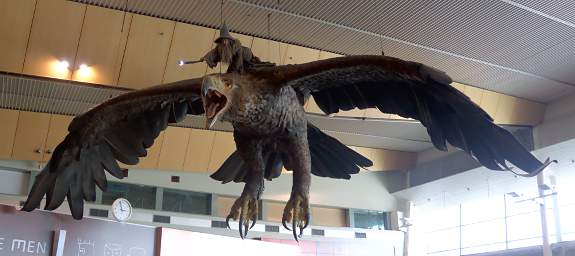
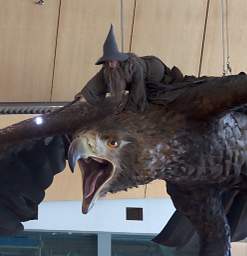
We probably should have taken a boat from Picton over to Wellington, but we didn't know what we were doing when we arranged this trip so we flew. In any case, it gave us a chance to see the middle-earth creatures in the Wellington airport.
 |
 |
| Gandalf in the Wellington Airport | |
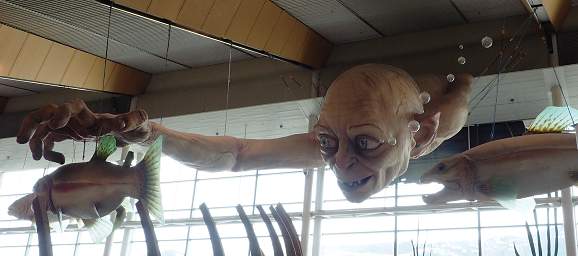 |
| Gollum
|
We checked out another rental car, checked into our hotel, then headed out to dinner with old friends and work colleagues of Dona's, John and Julie Miller and Nikola Nelson (Nikki).
When we told them about our desire to go to some of the small islands to see the native birds, they suggested we should at least visit Zealandia. Zealandia is an "urban wildlife reserve," but unlike every other urban wildlife reserve I have ever seen, it is a serious one. It has a serious predator / mammal proof fence around it, with the result that it is probably a better place to see native New Zealand species than most of the remote islands. John was instrumental in setting up Zealandia; when Dona was working in Wellington he was working on it and it was called the "Karori Wildlife Sanctuary". Nikki did a lot of work breeding Tuataras in Zealandia and reintroducing them on some of the islands where invasive species have been removed.
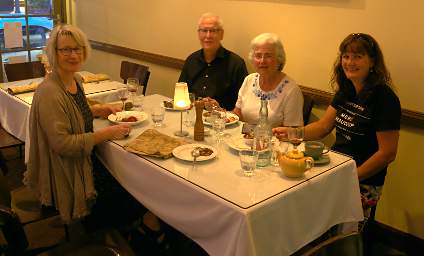 |
| Dinner with Julie, John and Nikki |
So, early the next morning we headed just up the road to one of the coolest urban parks in the world.
Right after you enter the park there is a sign on the fence explaining what it takes to keep all the invasive species out. It's a pretty impressive endeavor. There's a double gated entrance, just in case a bad guy tries to wander in with you, or a good guy wants to head out.
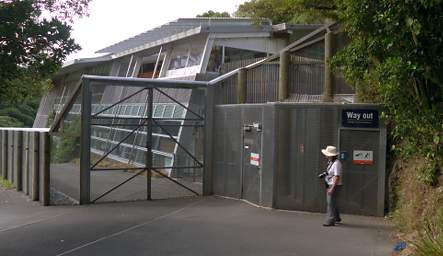 |
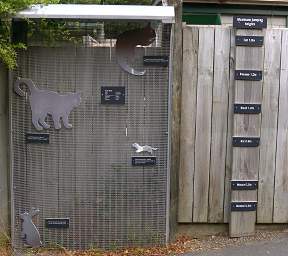 |
| Zealandia Fence | Animal Jumping Heights |
One of the first things we looked at was some Wellington Green Geckos. They were in small cages, and even then they were pretty tough to see. This was part of the population used for reintroduction on some of the isloated islands.
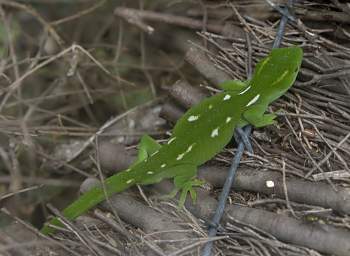 |
| Wellington Green Gecko (Naultinus Elegans Punctatus) |
 |
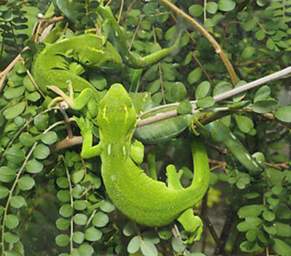 |
 |
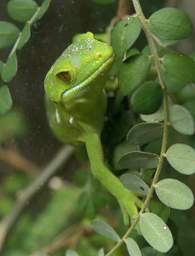 |
|
Most of the animals we saw in Zealandia were free-ranging. Some are in fenced off areas for their own protection, but since many are birds they are free to fly wherever they please. That includes over the fence and out of the reserve, where cats and stoats and rats prey upon them. As John said at dinner, "the cats in Wellington have the most expensive food in the world."
 |
 |
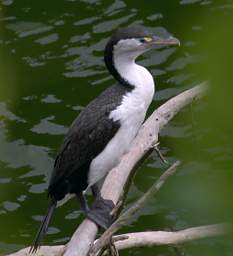 |
| Pied Shag (Phalocrocorax Varius) | ||
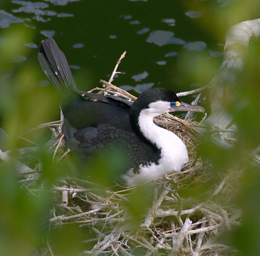 |
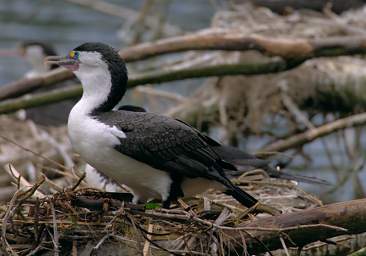 |
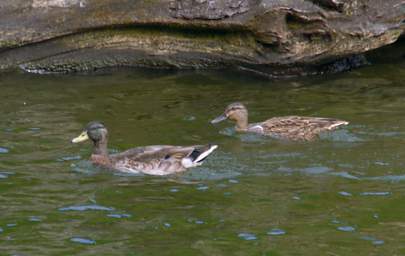 |
| Xxx Mallard Hybrid |
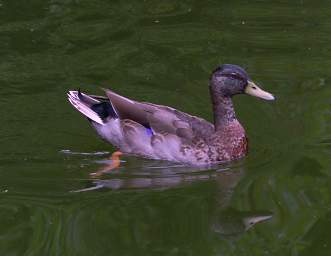 |
 |
It's easy to see how Takahe would disappear; it seems like even I could hunt them with a club. They look sort of like a Pukeko with a fat beak.
 |
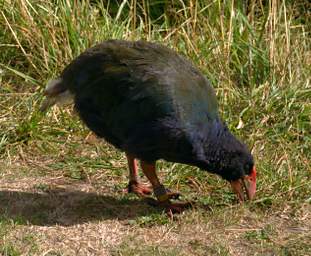 |
| Takahe (Notornis Mantelli) | |
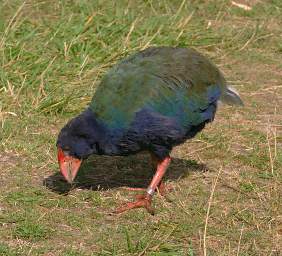 |
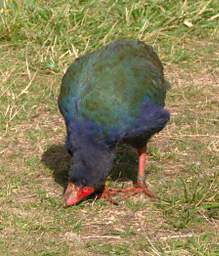 |
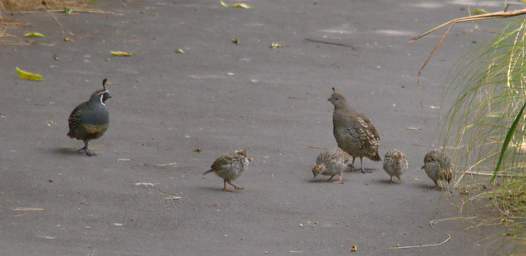 |
| California Quail (Lophortyx Californica) |
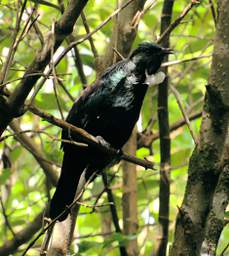 |
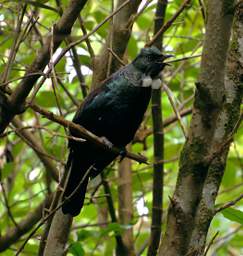 |
| Tui (Prosthemadera Novaeseelandiae) | |
We found some Tree Wetas, cricket-like critters, some of which grow to be really big.
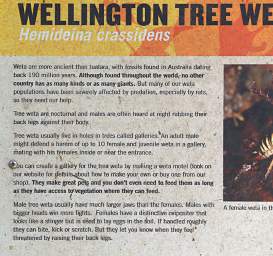 |
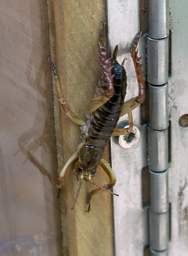 |
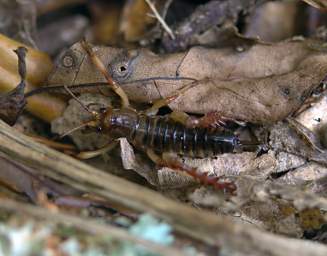 |
| A bit about Tree Wetas | Weta | |
As well as native animals, Zealandia is full of native plants; it gives you a feeling of what once was the "real" New Zealand.
The Black Tree Fern is one of the tallest tree ferns in the world. It's pretty weird for someone from North America when you see a fern that's a tree -- they can grow up to 20m. You feel a little like Alice in Wonderland. As the tree grows, the lower leaves die and fall off, leaving a very coarse bark. The bark ends up having little "shelves" on it where seeds can lodge and other plants start to grow. New growth starts in the middle of the crown; this succulent is a favorite of introduced possums, to the extent that they are causing extinction of tree ferns. Ferns are ancient plants; their genetics formed before the development of flowering plants, so they have no flowers or seeds.
Māori ate the pith of the tree fern; it was also used as a poultice for wounds, and the sap was used internally for worms and diarrhoea. Young fern leaves are tightly coiled; the shape is called "koru" in Māori.
 |
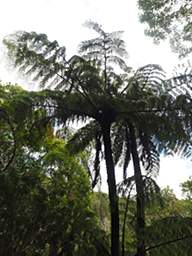 |
Bark |
| Black Tree Fern (Mamaku) (Cyathea Medullaris)
|
|
Another plant we learned about (but don't have a photo of) is the Tutu, (Coriaria arborea) . A shrub, it's one of New Zealand's more infamous plants. Every part of the plant except for the juice of its swollen purple petals contains the poison tutin. Stock dies from eating it; humans are poisoned by honey made from bees which have gathered the honeydew Insects which suck the sap excrete a honeydew which bees gather; humans are poisoned by honey made by those bees.
In spite of all that, Māori learned to mash the tender shoots of the plant into poultices to heal bruises, cuts and boils, and they made a drink from the only non-poisonous part — the juice of the petals. Animals are not all bothered — birds and insects eat the fruits and seeds. In addition, Coriaria is a nitrogen-fixer, and early successional forests establish and grow faster in volcanic ash sites where it is present.
The coolest part about Zealandia was that it is the only place we went on our trip that gave us a little bit of a feel for what New Zealand must have been like before human settlement. There weren't any of the huge flightless birds around, since they're all extinct, but the amount of bird-song in the park is amazing. We were surrounded by delightful bird-song whenever we were walking through the woods.
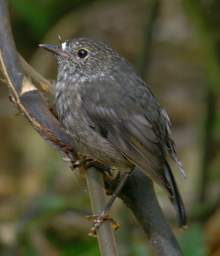 |
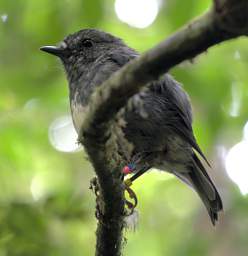 |
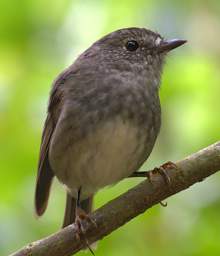 |
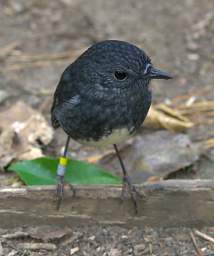 |
| |
|||
| South Island Robin (Petroica australis australis) | |||
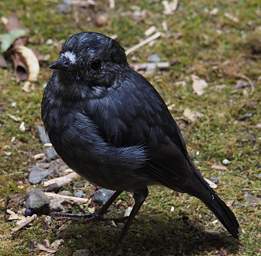 |
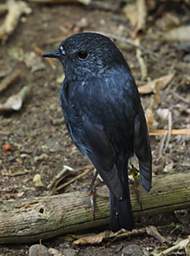 |
| New Zealand (North Island) Robin (Petroica australis longipes)
|
|
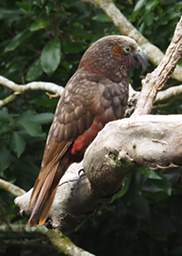 |
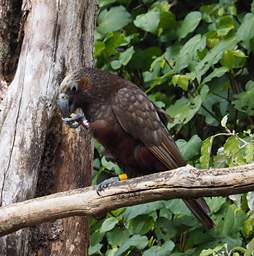 |
 |
| North Island Kaka (Nestor Meridionalis Septentrionalis)
|
||
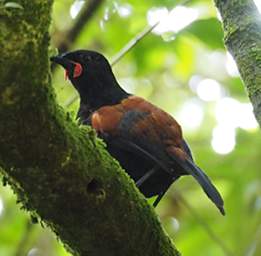 |
| Saddleback (Philesturnus Carunculatus)
|
 |
| Bellbird (Anthornis melanura)
|
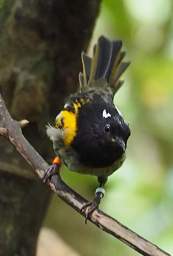 |
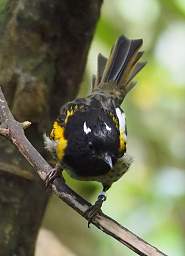 |
| Stitchbird (Hi Hi) (Notiomystis cincta)
|
|
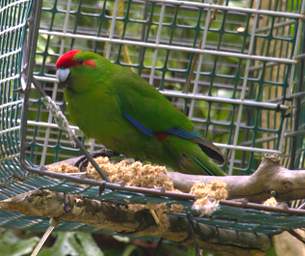 |
| Red Crowned Parakeet (Kakariki) (Cyanoramphus auriceps)
This guy is not in the cage; it's a feeder and s/he's just hanging out there |
 |
| Starling (Sturnus vulgaris) |
 |
| Brown Teal (Pateke) (Anas chlorotis) |
There's an old mine site inside the park; you can see some of the old equipment and some Cave Wetas in the entrance shaft.
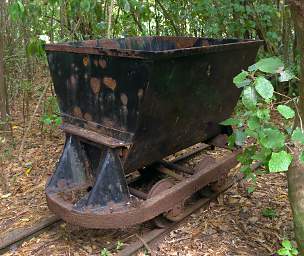 |
| Ore Dump |
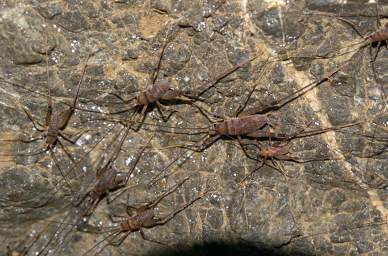 |
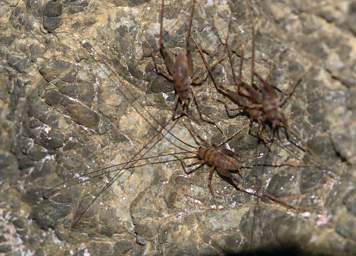 |
| Cave Weta | |
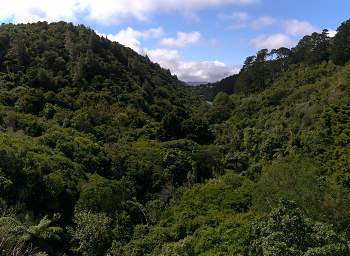 |
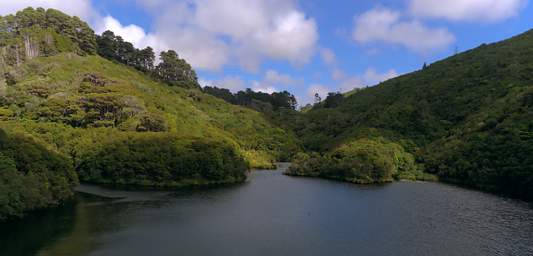 |
| Zealandia | |
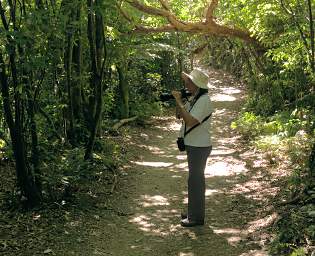 |
| Dona chasing Saddlebacks |
The Tuatara are in a separate fenced off area, but you could easily pass it by thinking it is just some fenced off forest. I wouldn't have spotted any of them except I knew to look there, and they had colored tags in their manes(?) for identification. They blend in really well, you probably wouldn't see them easily in these pictures if I hadn't isolated them and cropped everything else out. These are the guys Nikki works with. They were pretty cool.
 |
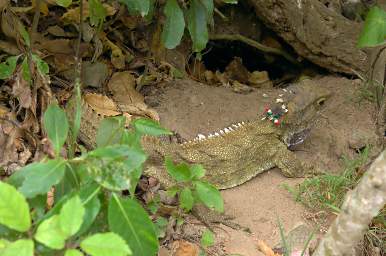 |
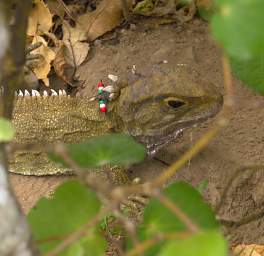 |
| |
||
| Tuatara | ||
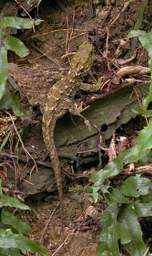 |
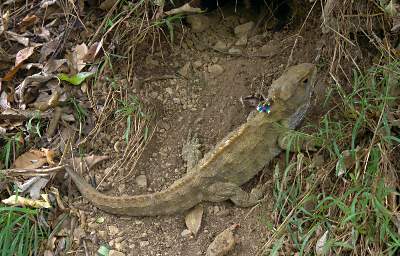 |
 |
| |
||
 |
| Flower Xxx Yellow Red |
The next day we went to the Wellington Museum where they have a great exhibit of Māori culture. The canoe in the photos below was really impressive. These guys are craftsmen of the first order.
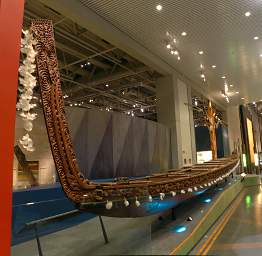 |
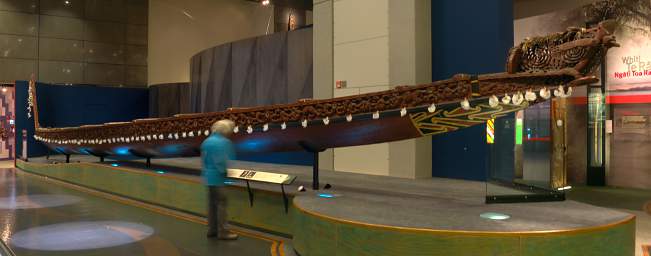 |
| Māori Canoe | |
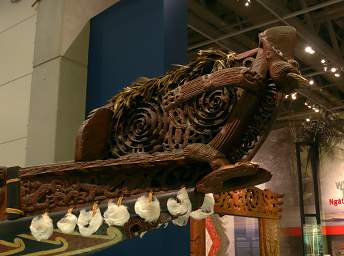 |
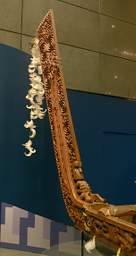 |
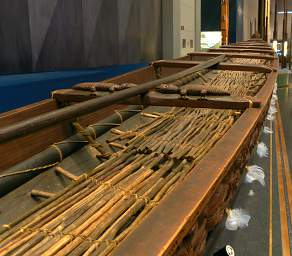 |
The next day we headed up to Hawkes Bay where we were looking to meet another friend and find some super-duper wood-turning tools.